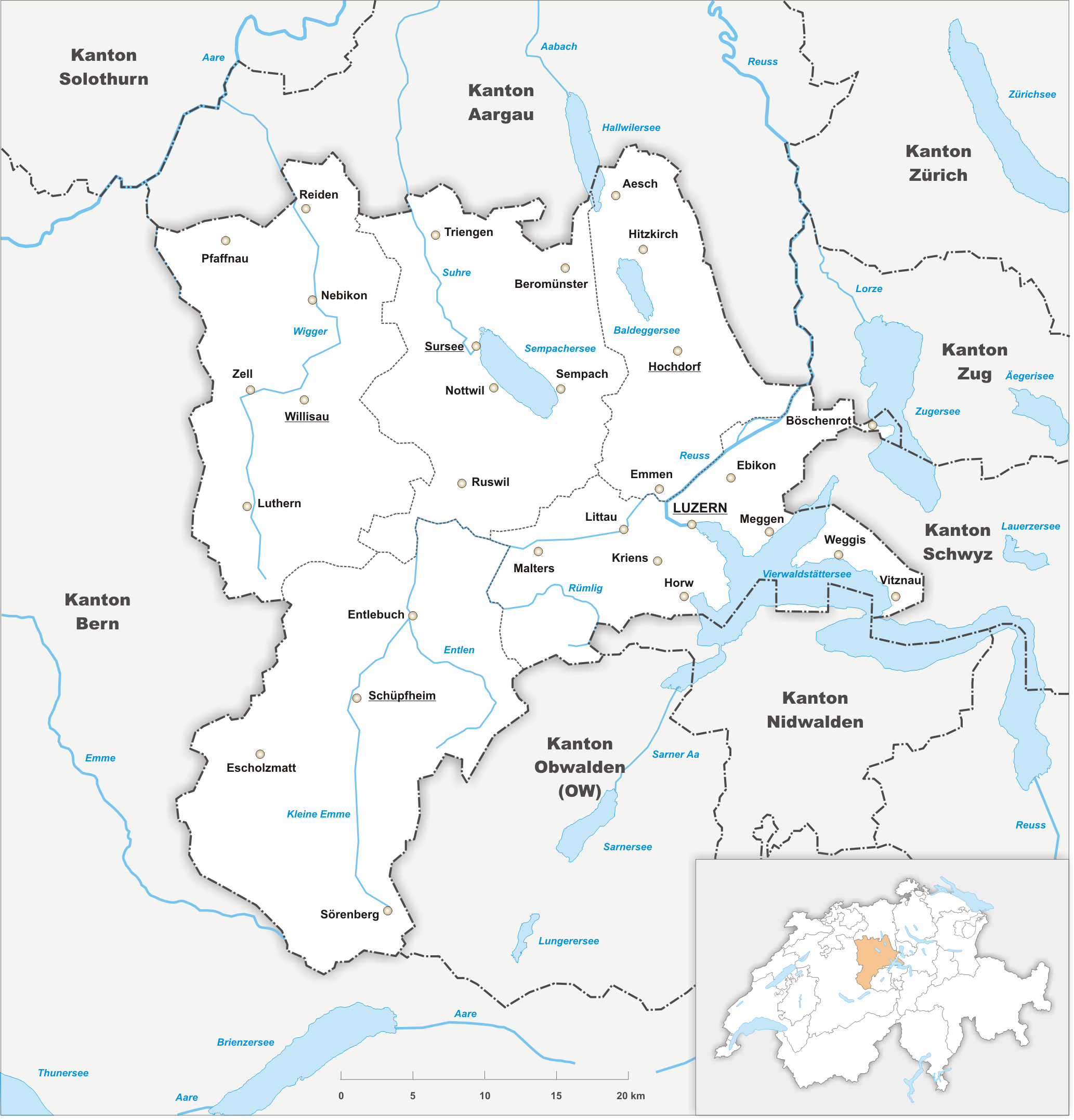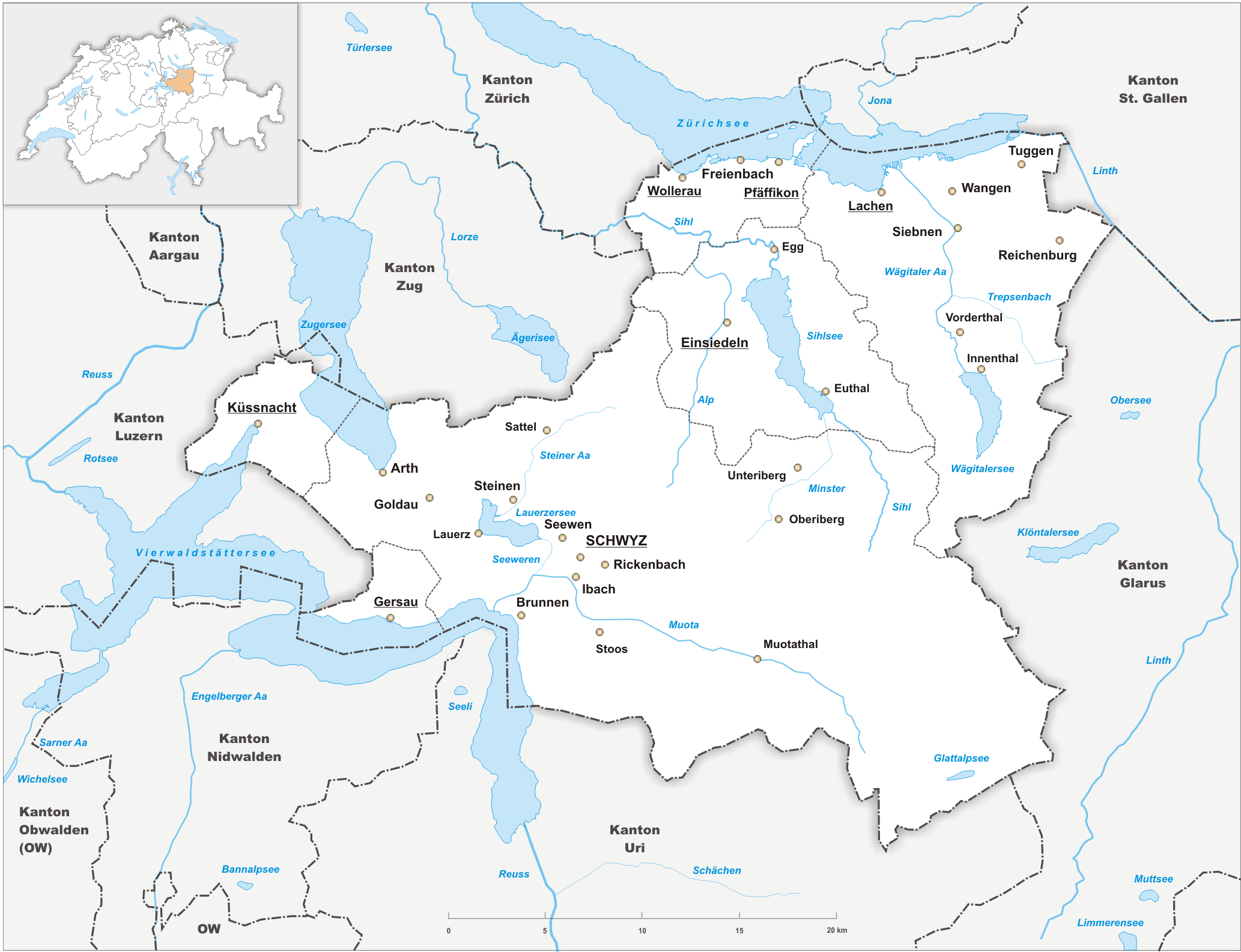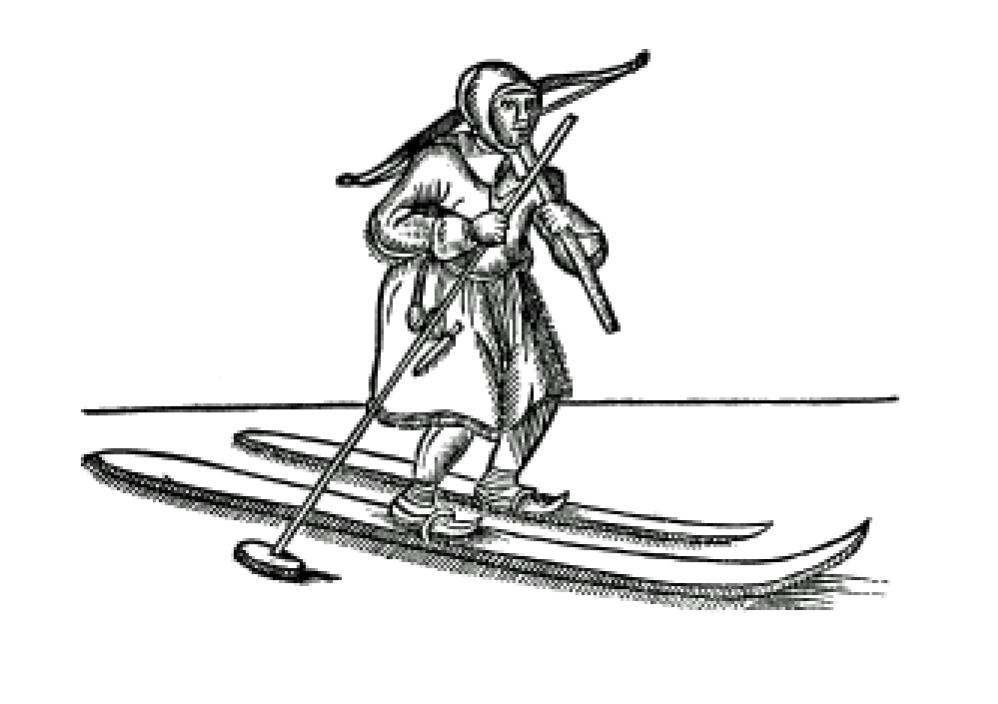|
Rigi–Scheidegg Railway
The Rigi–Scheidegg railway (german: Rigi-Scheidegg-Bahn; RSB) is a former railway line built high on the Rigi massif on the cantonal border between Lucerne and Schwyz in Switzerland. Today the line's trackbed, which is in length, and includes a tunnel and several bridges, is a rail trail, which serves as a panoramic footpath in summer, and as a route for cross-country skiing in winter . Even before the Vitznau–Rigi rack railway was opened in 1871, the Rigi Massif was a major tourist attraction, with a number of grand hotels occupying various locations on the massif. One of these was at the summit of the Scheidegg peak, which was not served by either the Vitznau–Rigi line or the Arth–Rigi rack railway that followed it. In order to provide easier access for its guests, the Rigi–Scheidegg railway was built to provide a link to Rigi Kaltbad on the Vitznau–Rigi line. The line opened in two stages, with the stage from Kaltbad to First opening on the 14 July 1874, and t ... [...More Info...] [...Related Items...] OR: [Wikipedia] [Google] [Baidu] |
Canton Of Lucerne
The canton of Lucerne (german: Kanton Luzern rm, Chantun Lucerna french: Canton de Lucerne it, Canton Lucerna) is a canton of Switzerland. It is located in the centre of Switzerland. The population of the canton (as of ) is . , the population included 57,268 foreigners, or about 15.8% of the total population. The cantonal capital is Lucerne. History The canton of Lucerne comprises territories acquired by its capital Lucerne, either by treaty, armed occupation or purchase. The first town acquired was Weggis (in 1380), Rothenburg, Kriens, Horw, Sempach and Hochdorf (all in 1394), Wolhusen and Entlebuch (1405), the so-called "Habsburger region" to the northeast of the town of Lucerne (1406), Willisau (1407), Sursee and Beromünster (1415), Malters (1477) and Littau (1481), while in 1803, in exchange for Hitzkirch, Merenschwand (held since 1397) was given up. Prehistory The oldest traces of humans in the Lucerne area are stone artifacts and cave bear bones found in the Ste ... [...More Info...] [...Related Items...] OR: [Wikipedia] [Google] [Baidu] |
Vitznau–Rigi Railway Line
The Vitznau–Rigi railway line is a Swiss standard gauge rack railway that runs from on the shore of Lake Lucerne to Rigi. It was built in 1871 by the Rigibahn, and is now owned by Rigi Railways, along with the Arth–Rigi railway line, which runs on the other side of the mountain, and the Weggis–Rigi Kaltbad cable car (''Luftseilbahn Weggis–Rigi Kaltbad'', LWRK). History The Vitznau–Rigi railway (VRB) was opened on 21 May 1871 as the ''Rigibahn'' and the first mountain railway in Europe. The first rack railway of Europe had already been opened in the quarry of Ostermundigen in 1870. The quarry was officially opened for marketing reasons only in October 1871. The Vitznau–Rigi Railway was built by the engineers Niklaus Riggenbach, Ferdinand Adolf Naeff and Olivier Zschokke. At first it ran only from Vitznau (439 metres above sea level) via Kaltbad (1453 m.a.s.l.) to Rigi Staffelhöhe (1550 m.a.s.l.). On 27 June 1873,The date 23 June 1873 frequently quoted contradict ... [...More Info...] [...Related Items...] OR: [Wikipedia] [Google] [Baidu] |
Metre Gauge Railways In Switzerland
The metre (British spelling) or meter (American spelling; see spelling differences) (from the French unit , from the Greek noun , "measure"), symbol m, is the primary unit of length in the International System of Units (SI), though its prefixed forms are also used relatively frequently. The metre was originally defined in 1793 as one ten-millionth of the distance from the equator to the North Pole along a great circle, so the Earth's circumference is approximately km. In 1799, the metre was redefined in terms of a prototype metre bar (the actual bar used was changed in 1889). In 1960, the metre was redefined in terms of a certain number of wavelengths of a certain emission line of krypton-86. The current definition was adopted in 1983 and modified slightly in 2002 to clarify that the metre is a measure of proper length. From 1983 until 2019, the metre was formally defined as the length of the path travelled by light in a vacuum in of a second. After the 2019 redefiniti ... [...More Info...] [...Related Items...] OR: [Wikipedia] [Google] [Baidu] |
Closed Railway Lines In Switzerland
Closed may refer to: Mathematics * Closure (mathematics), a set, along with operations, for which applying those operations on members always results in a member of the set * Closed set, a set which contains all its limit points * Closed interval, an interval which includes its endpoints * Closed line segment, a line segment which includes its endpoints * Closed manifold, a compact manifold which has no boundary Other uses * Closed (poker), a betting round where no player will have the right to raise * ''Closed'' (album), a 2010 album by Bomb Factory * Closed GmbH, a German fashion brand * Closed class, in linguistics, a class of words or other entities which rarely changes See also * * Close (other) * Closed loop (other) * Closing (other) * Closure (other) * Open (other) Open or OPEN may refer to: Music * Open (band), Australian pop/rock band * The Open (band), English indie rock band * ''Open'' (Blues Image album), 1969 * ' ... [...More Info...] [...Related Items...] OR: [Wikipedia] [Google] [Baidu] |
World War I
World War I (28 July 1914 11 November 1918), often abbreviated as WWI, was one of the deadliest global conflicts in history. Belligerents included much of Europe, the Russian Empire, the United States, and the Ottoman Empire, with fighting occurring throughout Europe, the Middle East, Africa, the Pacific, and parts of Asia. An estimated 9 million soldiers were killed in combat, plus another 23 million wounded, while 5 million civilians died as a result of military action, hunger, and disease. Millions more died in genocides within the Ottoman Empire and in the 1918 influenza pandemic, which was exacerbated by the movement of combatants during the war. Prior to 1914, the European great powers were divided between the Triple Entente (comprising France, Russia, and Britain) and the Triple Alliance (containing Germany, Austria-Hungary, and Italy). Tensions in the Balkans came to a head on 28 June 1914, following the assassination of Archduke Franz Ferdin ... [...More Info...] [...Related Items...] OR: [Wikipedia] [Google] [Baidu] |
Swiss Locomotive And Machine Works
Swiss may refer to: * the adjectival form of Switzerland * Swiss people Places * Swiss, Missouri * Swiss, North Carolina *Swiss, West Virginia * Swiss, Wisconsin Other uses *Swiss-system tournament, in various games and sports *Swiss International Air Lines ** Swiss Global Air Lines, a subsidiary * Swissair, former national air line of Switzerland *.swiss alternative TLD for Switzerland See also * Swiss made, label for Swiss products * Swiss cheese (other) * Switzerland (other) *Languages of Switzerland, none of which are called "Swiss" *International Typographic Style, also known as Swiss Style, in graphic design *Schweizer (other), meaning Swiss in German *Schweitzer, a family name meaning Swiss in German *Swisse Swisse is a vitamin, supplement, and skincare brand. Founded in Australia in 1969 and globally headquartered in Melbourne, and was sold to Health & Happiness, a Chinese company based in Hong Kong previously known as Biostime Internation ... [...More Info...] [...Related Items...] OR: [Wikipedia] [Google] [Baidu] |
Standard Gauge
A standard-gauge railway is a railway with a track gauge of . The standard gauge is also called Stephenson gauge (after George Stephenson), International gauge, UIC gauge, uniform gauge, normal gauge and European gauge in Europe, and SGR in East Africa. It is the most widely used track gauge around the world, with approximately 55% of the lines in the world using it. All high-speed rail lines use standard gauge except those in Russia, Finland, and Uzbekistan. The distance between the inside edges of the rails is defined to be 1435 mm except in the United States and on some heritage British lines, where it is defined in U.S. customary/Imperial units as exactly "four feet eight and one half inches" which is equivalent to 1435.1mm. History As railways developed and expanded, one of the key issues was the track gauge (the distance, or width, between the inner sides of the rails) to be used. Different railways used different gauges, and where rails of different gauge met – ... [...More Info...] [...Related Items...] OR: [Wikipedia] [Google] [Baidu] |
Historical Dictionary Of Switzerland
The ''Historical Dictionary of Switzerland'' is an encyclopedia on the history of Switzerland that aims to take into account the results of modern historical research in a manner accessible to a broader audience. The encyclopedia is published by a foundation under the patronage of the Swiss Academy of Humanities and Social Sciences (SAGW/ASSH) and the Swiss Historical Society (SGG-SHH) and is financed by national research grants. Besides a staff of 35 at the central offices, the contributors include 100 academic advisors, 2500 historians and 100 translators. Print edition The encyclopedia is published simultaneously in three of Switzerland's national languages: German (''Historisches Lexikon der Schweiz'', HLS, in red), French (''Dictionnaire Historique de la Suisse'', DHS, in blue) and Italian Italian(s) may refer to: * Anything of, from, or related to the people of Italy over the centuries ** Italians, an ethnic group or simply a citizen of the Italian Republic or ... [...More Info...] [...Related Items...] OR: [Wikipedia] [Google] [Baidu] |
Arth–Rigi Railway Line
The Arth–Rigi railway line is a Swiss standard gauge rack railway that runs from to Rigi. It was built by the eponymous Arth-Rigi-Bahn () between 1873–1875 and operated by that company until its merger with the Vitznau-Rigi-Bahn in 1992 to form Rigi Railways. History When the people of Art, canton of Schwyz, heard that a railway to Rigi was to be built from the Lucerne side, they sought and received a concession in 1870 from the Cantonal Council of Schwyz to build lines on the Schwyz route between Staffelhöhe (Rigi Staffel) and Rigi Kulm and between Arth, Oberarth and Kulm. They commissioned the two engineers, Olivier Zschokke and Niklaus Riggenbach, to build the line. The ''Arter Aktiengesellschaft'' (Art Ltd.) immediately started building the line from Staffelhöhe to Rigi Kulm (1752 m above sea level). The Vitznau–Rigi Railway company line connected its line with this line in the summer of 1873 and it had to pay fees for the use of the Staffelhöhe–Rigi Kulm section ... [...More Info...] [...Related Items...] OR: [Wikipedia] [Google] [Baidu] |
Swisstopo
Swisstopo is the official name for the Swiss Federal Office of Topography (in German language, German: ''Bundesamt für Landestopografie''; French language, French: ''Office fédéral de topographie''; Italian language, Italian: ''Ufficio federale di topografia''; Romansh language, Romansh: ''Uffizi federal da topografia''), Switzerland's national mapping agency. The current name was made official in 2002. It had been in use as the domain name for the institute's homepage, swisstopo.ch, since 1997. Maps The main class of products produced by Swisstopo are topographical maps on seven different Scale (map), scales. Swiss maps have been praised for their accuracy and quality. Regular maps * 1:25.000. This is the most detailed map, useful for many purposes. Those are popular with tourists, especially for famous areas like Zermatt and St. Moritz. These maps cost CHF 13.50 each (2004). 208 maps on this scale are published at regular intervals. The first map published on this scale ... [...More Info...] [...Related Items...] OR: [Wikipedia] [Google] [Baidu] |
Canton Of Schwyz
The canton of Schwyz (german: Kanton Schwyz rm, Chantun Sviz; french: Canton de Schwytz; it, Canton Svitto) is a canton in central Switzerland between the Alps in the south, Lake Lucerne to the west and Lake Zürich in the north, centred on and named after the town of Schwyz. It is one of the founding cantons of Switzerland; Switzerland's name is derived from the name of the canton, and the flag of Switzerland from its coat of arms. For the history of the name, see Schwyz. The Swiss Federal Charter is on display in Schwyz. Northeast of the town of Schwyz is Einsiedeln Abbey. History Prehistory to the Roman era The earliest traces of humans in Schwyz are from the Upper Paleolithic and Early Mesolithic, or about 12,500 BC. An excavation of the karst caves in the valley of the Muota river (''Muotatal'') revealed numerous sites, some dating to the Younger Dryas period (c. 10,000 BC). The alpine meadows at Bödmeren, Twärenen and Silberen were Stone Age hunter-gatherer camps. ... [...More Info...] [...Related Items...] OR: [Wikipedia] [Google] [Baidu] |
Cross-country Skiing
Cross-country skiing is a form of skiing where skiers rely on their own locomotion to move across snow-covered terrain, rather than using ski lifts or other forms of assistance. Cross-country skiing is widely practiced as a sport and recreational activity; however, some still use it as a means of transportation. Variants of cross-country skiing are adapted to a range of terrain which spans unimproved, sometimes mountainous terrain to groomed courses that are specifically designed for the sport. Modern cross-country skiing is similar to the original form of skiing, from which all skiing disciplines evolved, including alpine skiing, ski jumping and Telemark skiing. Skiers propel themselves either by striding forward (classic style) or side-to-side in a skating motion (skate skiing), aided by arms pushing on ski poles against the snow. It is practised in regions with snow-covered landscapes, including Europe, Canada, Russia, the United States, Australia and New Zealand. Competiti ... [...More Info...] [...Related Items...] OR: [Wikipedia] [Google] [Baidu] |







